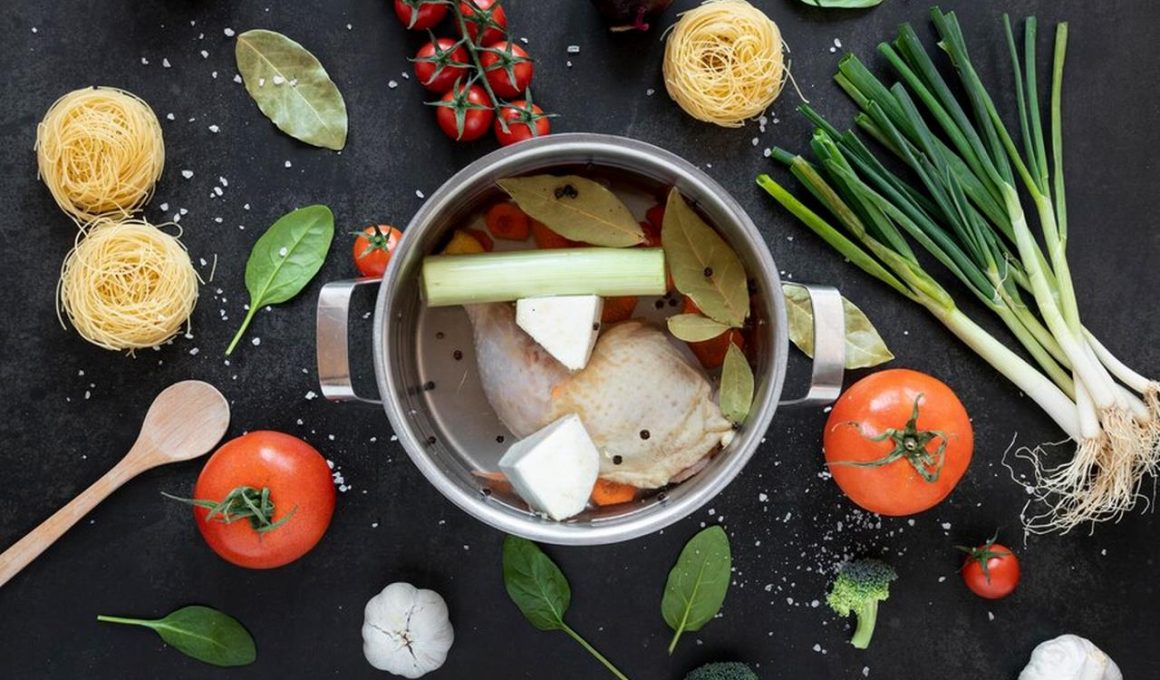There are so many ways to cook noodles. They can be simple, quick meals or fancy enough to serve as a dinner party appetizer. The cooking method for various types of noodles varies, but they are all relatively easy. Some types, such as wheat, egg, rice, and mung-bean noodles, are tossed against the wall, while buckwheat noodles have an incredibly long cooking time. So, how do you cook them the right way?
Recipes
Noodles are one of the most versatile foods and there are a variety of ways to cook them. Fresh pasta can be cut into either long or thin pieces. They can also be made with eggs. Stir-frying is a great way to cook them. The key to success is speed and constant stirring. Follow the steps below for cooking the perfect noodles. If you’re cooking noodles for the first time, you should start by following the directions for fresh pasta.
Adding salt to the boiling water is essential. While this method takes longer, it allows the noodles to absorb the flavor of the water. You can also use other ingredients for flavoring the finished dish, such as garlic or lemon. However, remember that a pinch of salt per pound of pasta is the recommended amount. While this may seem like a lot, it’s worth it for the savory flavor. But remember: this tip applies to any type of pasta!
The most common type of noodle is egg-based. You can also choose thin or cellophane rice noodles. Cellophane rice noodles do not need boiling water. After draining, shake them gently and check for dryness. A small dab of sesame oil helps to prevent them from sticking. You can also add a few extra vegetables to your dish before serving. As with any other type of dish, it’s best to follow the instructions carefully and experiment with different combinations.
Adding chicken is another popular way to cook noodles. Chicken is best cooked shredded or pan-fried. In some cases, chicken is added to the noodles when they’re simmering. Once the chicken is cooked through, remove it from the pan and place on a plate. Before cooking the noodles, clean the pan thoroughly. You can then cook the rest of the ingredients for the dish. The results are a tasty and filling meal in less than 30 minutes.
Techniques
There are many ways to prepare and cook noodles, but the basic principle is the same: boil them until just tender. Generally, noodles should be cooked until they’re slightly firm and opaque in color. Once they’re done, they can be served. Traditionally, pasta is served with a sauce. Some people use a combination of sauces or eat them plain. Either way, there’s an appropriate method for every occasion.
To make noodles that cook quickly, boil them for about 3 minutes. Make sure to save the cooking water to use later. This water is packed with starch and helps thick sauces adhere to the noodles. Add about a tbsp of salt before cooking to get a salty taste. If you want to add more flavor to the noodles, you can adjust the salt to taste. However, if you want to eat pasta that tastes more like the ocean, add more water.
When using fresh pasta, make sure to drain it well after cooking. Fresh pasta cooks much faster than dried pasta, so be sure to keep an eye on the cooking process. Fresh pasta will begin to firm up as it cooks, so don’t let it overcook. Also, be sure to rinse the water with cold water. Once the pasta is fully drained, keep it warm by keeping it covered. Then, you can toss it with sauce and enjoy!
A simple way to speed up the process is to soak the noodles overnight in cold water before boiling. This will help the noodles absorb moisture from the water, which will delay their cooking time. It will also prevent the pasta from becoming gummy and will leave a good flavor. You can then cook it as usual for about a minute or two. You’ll be surprised at how fast and tasty the noodles will be! There’s no need to spend hours in the kitchen just to prepare a delicious meal. Listed below are some techniques to help you get the most out of your pasta cooking.
Size of noodle
When you’re cooking noodles, you need to consider their size and how much water to add. The size of the noodle will affect the cooking time. Here’s a table showing the relationship between water content and cooking time: the larger the noodle, the longer the cooking time. For smaller noodles, the cooking time will be shorter. Larger noodles, on the other hand, will require a longer cooking time.
Cooking time
A standard cooking time for noodles is eight to ten minutes, depending on the amount of water and the type of noodle. A fresh noodle may only need two to three minutes to boil. However, if you add noodles to a casserole or soup that will finish cooking in the oven, you can add them to the casserole a couple of minutes before it is ready. Regardless of the cooking time, the time for noodles is an essential part of many recipes.
Optimal cooking time is an important factor in determining the quality of SN. This can be influenced by the solid loss during cooking. In this study, we investigated the effect of cooking time on the solid loss and the texture of cooked SN. We used fresh SN and CN for our test, and we determined that fresh SN required a shorter cooking time. Optimal cooking time for noodles is dictated by the gluten content of the noodle. By incorporating probiotic microcapsules, the amount of gluten was decreased and the cooking time was reduced.
To ensure that the noodles are al dente, cook them for at least two minutes less than the package directions suggest. The water in a saucepan is typically around five to six liters per one kilogram of pasta. It is important to use sufficient water for this purpose because the water cools off quickly after the pasta is laid. A larger ratio of water to pasta results in a better finished dish. Also, remember that cooking time for pasta varies depending on the type.
For homemade ramen, the perfect ratio of water to noodle is one liter of water to 100 grams. If you use less water than this, you may end up with a sticky and gluey mass that needs to be removed. Make sure to use thick-bottomed saucepans to cook your noodles and use clean filtered water. Lastly, remember to salt the water after the noodles are finished. This will make your noodle taste great!
Salting the water
Salting the water when cooking noodles is an important step when it comes to creating a delicious dish. However, you have to be sure to add the right amount. Using more salt than necessary can lead to bland noodles. A teaspoon of salt per cup of water is a good rule of thumb. It is also advisable to use kosher salt instead of table salt. In addition, use coarse grain salt. If you have any doubts, use the advice of chefs such as Marcella Hazan.
Adding salt to boiling water makes the pasta cook faster. Adding a teaspoon of salt will raise the temperature of the water by 1 degree. That may not seem like much, but it will make a big difference. One tablespoon of salt will raise the temperature of a quart of water by about 1degF, enough to cook a single pound of pasta. If you want to add more salt, use larger amounts of salt.
While salting the water when cooking noodles might seem like an afterthought, it’s essential to ensure that the pasta is properly seasoned. Under-salted water will make the pasta flavorless. In addition, the pasta may not cook properly or become too hard or rubbery. If you have a small pot, the water may not reach the right temperature and can stick together, rendering it unappetizing.
A common misconception about the need for salting the water when cooking noodles is that it will make the pasta cook faster. This is a common misconception. Adding a small amount of salt to the water is no way to increase the cooking time. Adding a teaspoon of salt will increase the flavor of the pasta. So, before you add the salt to the water, check to see that you are using enough salt. This way, you’ll have the best results when cooking noodles.
Podobne tematy




